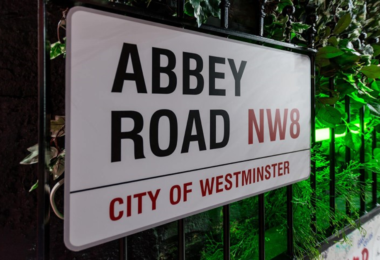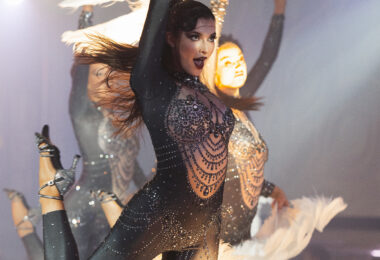The Barbican Centre has always been home to some of the most unique and forward thinking exhibitions out there. From the Rain Room installation to the United Visual Artists, each one is as surprising and interesting as the last and with their latest project Digital Revolution; they are definitely trying to push the boundaries.
The purpose of the exhibition is to reveal how digital media is having a massive effect on modern music, film and art and through that, how our relationship with these mediums has evolved dramatically over the years. It’s an interesting and poignant concept, treating the idea that we are now part of a ‘digital renaissance’ that is quickly changing the face of our world.
The exhibition is one continuously immersive experience, with various interactive platforms and displays that showcase the changing nature of digital media. This is paralleled chronologically in terms of what is on display, as the show begins from the 70’s and makes its way to the near future by the end of the exhibition.
Area 1
Starting off with an archive of old-school technology, it boasts arcade games, the first ever synthesizers and even Dire Straits’ iconic ‘Money For Nothing’ video that’s sure to delight all retro geeks. Depending on how old you are, this feature will either be a cause to reminisce or be amazed, as many of the younger visitors gasped at the sight of these antiquated pieces of technology. This part of the exhibition shows the more humble beginnings of digital media, serving as a great retrospective especially when compared to the advances modern technology has made in recent times.
Moving on, you enter through a more contemporary space, with insights into the making of films such as Inception and Gravity. ‘Creative Spaces’ explores the way in which conventional notions of time, narrative and space can be reinterpreted thanks to digital media. With behind the scene footage of the complex making of Gravity, you realise the importance digital media has on the nature of modern filmmaking and the arduous task of taking it from a concept into the final product. For Inception, you’re presented the fold-over sequence of Paris, through an interactive and informative screen that let’s you control the movement of it, in a fashion akin to Google Maps.
This section equally has a strong focus on music and how imaging technologies have affected the way in which we listen and make music in our contemporary world. Entitled ‘Sound & Vision’, you’ll find the 6ft tall animated head of will.i.am, which thanks to projection mapping follows you around the room while three robot instruments perform his new song ‘Dreamin’ About The Future’. A collaborative effort with Yuri Suzuki entitled ‘Pyramidi’; it’s a grandiose project that’s sure to take you back a bit. Also on show here is Arcade Fire’s interactive HTML film ‘The Wilderness Downtown’, which uses footage of your hometown as a music video for their song ‘We Used To Wait’.
Area 2
Next up is the most interactive (and therefore most entertaining) section with ‘State of Play’. Exploring gesture control and camera technologies, there are a number of displays that are sure to keep you occupied for some time. Beginning with Daniel Rozin’s ‘Mirror No. 10’, the piece reflects the movement and shape of people in front of it yet in a digitalised and pixelated manner.
Rafael Loranzo-Hemmer’s ‘The Year Midnight’, which is based on a John Donne poem and replaces your eyes with plumes of smoke, which was one of the most popular displays. The most gargantuan display in this section is definitely Chris Milk’s ‘The Treachery of Sanctuary’, which projects giant shadows of yourself as birds in flight. Whether you participate or not, you’re sure to be amazed by the sheer size and effort that has been put into it.
Area 3
The final section is an incredibly immersive experience which will challenge your senses and ultimately leaves you a little in awe. Although this description sounds pretty vague, this really is something you have to discover for yourself. (Hint: Lasers and a dark room are involved and it’s probably not suitable for smaller children)
As Digital Revolution chronicles the evolution of digital media, it reveals how technology has affected people of all ages and how it has connected generations from the last 40 years. Not only that, but it shows how interconnected all modern art forms are thanks to the advances of digital media. Music for instance, is no longer an inherently audial experience but is now part of a fabric of multiple senses that alter the listener’s experience in more than one way. The same can be said about art, as the audience is no longer simply admiring the piece from a distance, but is now an integrative part of the piece itself.
With the advances in these technologies, audiences can show a greater appreciation for various artistic forms without needing to be an expert in the field. A great experience for any member of the family, whether you’re a tech expert or not, there’s definitely something for everyone here.


![[Image - Matthew G Lloyd]](https://www.fqmagazine.co.uk/wp-content/uploads/2014/07/7d0d25bfcaa1421c2931a4f0387462aa.jpg)





